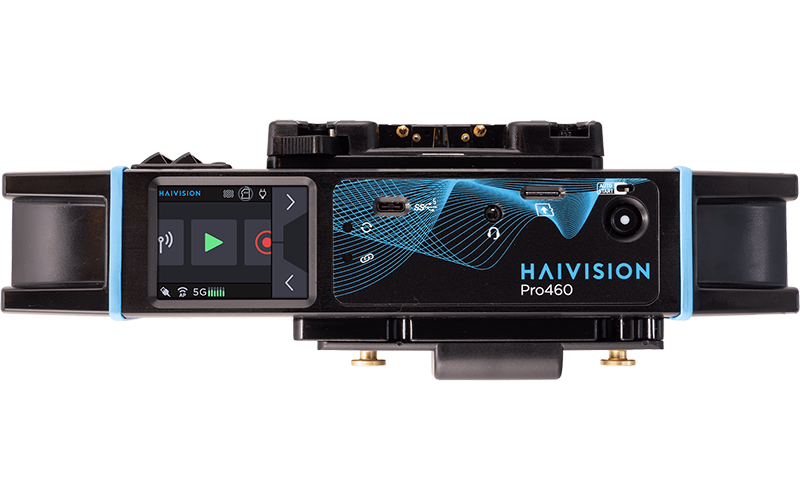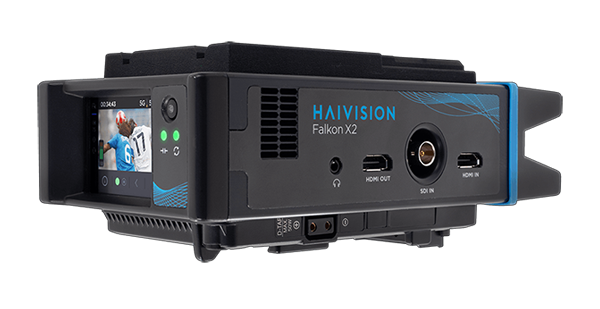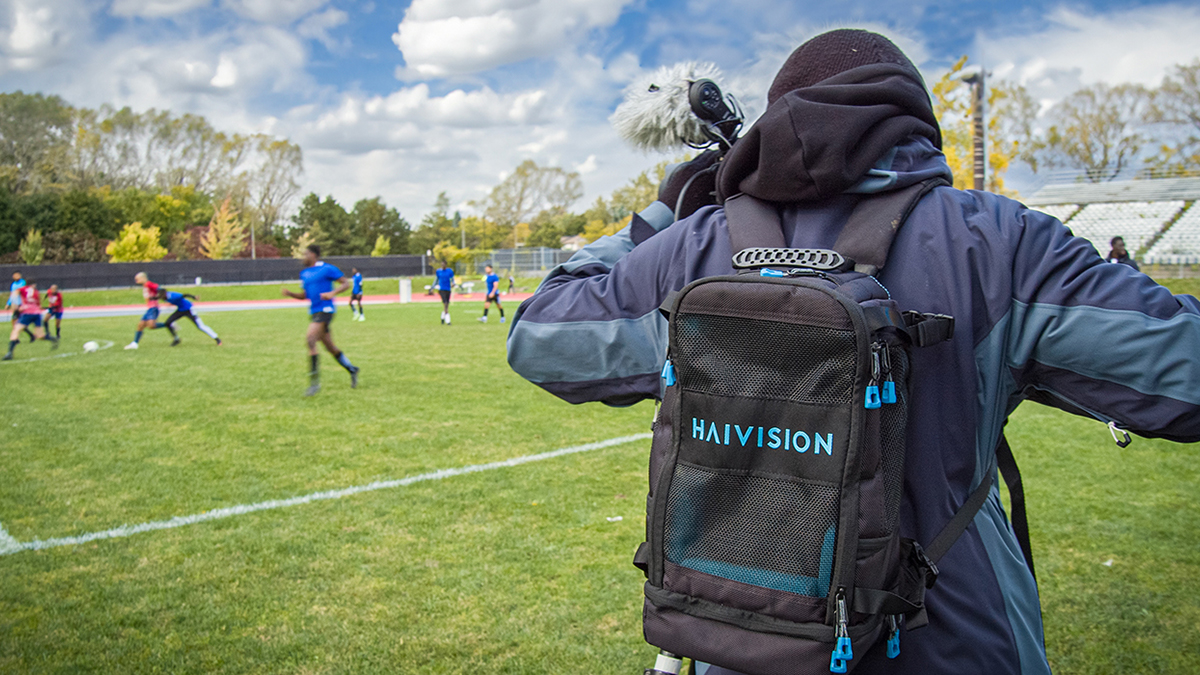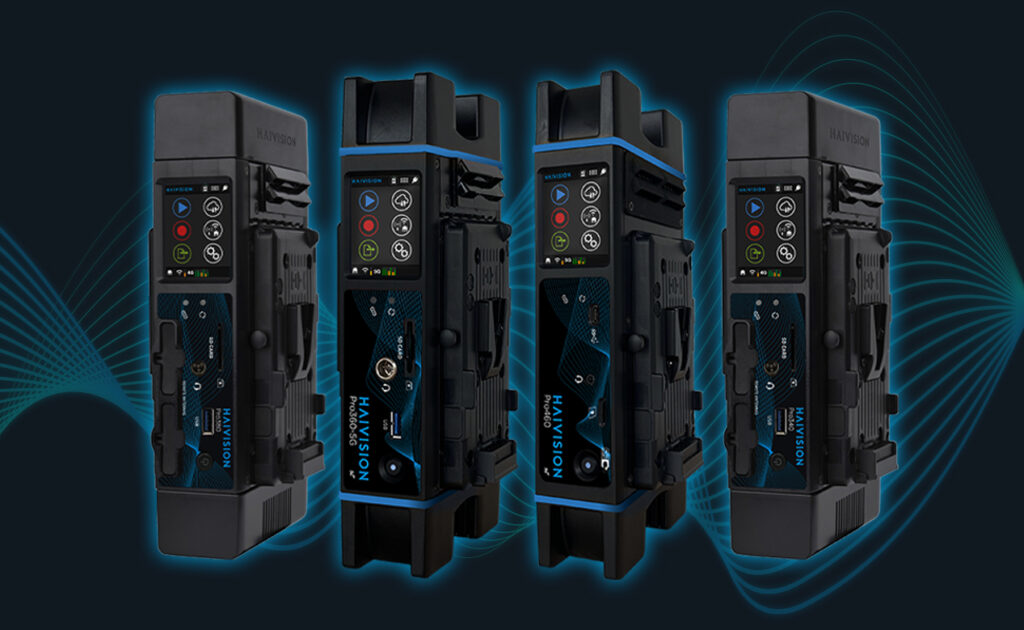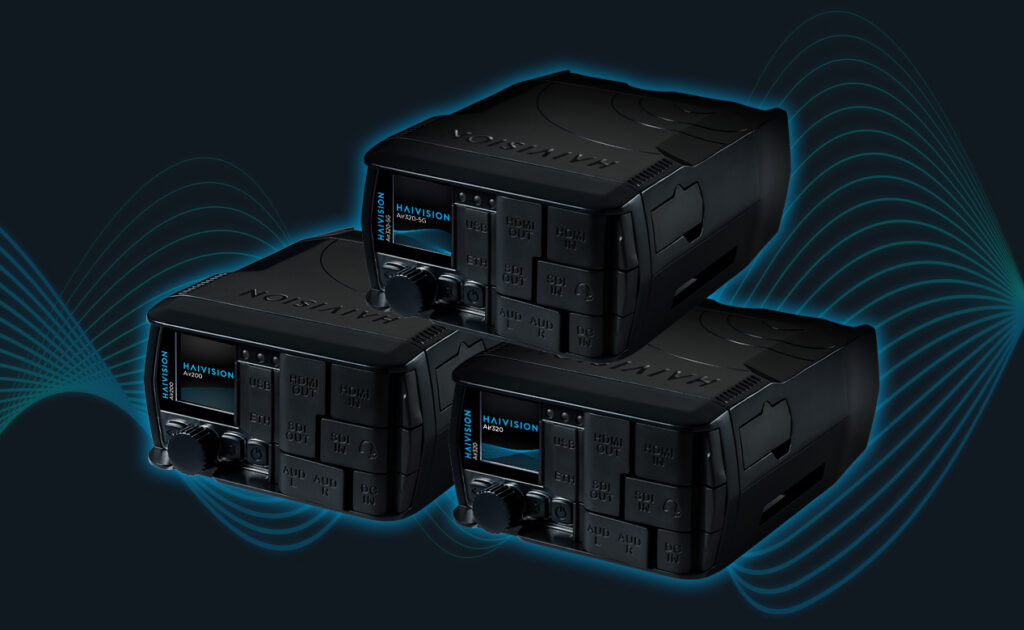With remote and cloud production becoming more widespread across the broadcast industry, trying to find the right technology to handle the demands of covering live events can become a challenge. Mobile video transmitters enable the streaming of broadcast-quality video over 4G and 5G cellular networks, making them essential for remote production applications. Used in environments where IP network connectivity can be unpredictable, a mobile video transmitter functions as both a video encoder and cellular modem in one package and delivers live video over several networks for greater bandwidth and increased reliability, which is commonly known as cellular bonding.
In this post, we’ll give you an overview of the most common use cases of mobile video transmitters, what features you should be looking for when choosing the right one for an event, and which Haivision solution is best for your use case.
Haivision Mobile Transmitters
Haivision has an extensive line of mobile video transmitters including the Haivision Air320e-5G, Haivision Pro360-5G, Haivision Pro380, and the Haivision Pro460. All transmitters can be paired with the Haivision StreamHub receiver and leverage the two-time Emmy® award-winning SST (Safe Stream Transport) protocol. Altogether, this makes a complete remote production broadcast solution.
The Haivision Air 320e-5G transmitter encodes high-quality video from SDI and HDMI sources to HEVC or H.264 at very low latency. It features two internal modems (expandable to four with external USB cellular modems) and offers live and/or local recording in any format including from SD to HD and in HEVC and H.264 with no extra licenses required. The Air320e-5G transmits over a bonded cellular connection including 4G and 5G, plus an Ethernet or WiFi connection, BGAN, and satellite services like Starlink.
The Haivision Pro line of mobile video transmitters features a variety of models including the popular Haivision Pro 3 series, which can encode a live HD video source to H.264 or HEVC for transmission over 3G, 4G, and 5G networks, and the latest generation 4K UHD and quad-HD mobile video transmitter, the Haivision Pro460.
All of the transmitters are designed for reliable, low latency live video contribution over bonded cellular and IP networks from anywhere and some of their many features include easy video returns and intercom for two-way audio communications between live talent and the production staff, enabling collaboration and the ability to make any adjustments in real-time.
While all Haivision transmitters are secure, reliable, and easy to set-up and use for sports broadcasting, live event production, and newsgathering, some key features stand out when deciding on which one is best for your specific workflow.
Portability and Flexibility
A key advantage to leveraging a mobile video transmitter for broadcast workflows is the flexibility that it awards broadcast professionals. The portability of a mobile video transmitter can be important when it comes to covering certain events, allowing users to capture dynamic and immersive content to enhance the viewing experience.
The Haivision Air features a compact form factor, complete with removable and rechargeable built-in battery, making it very portable. It is typically carried in a pouch or clipped to a belt, and can also be mounted on a tripod. Another unique way to deploy the compact Air is on a drone. This was the approach taken by Telefónica, one of the largest telephone operators and mobile network providers in the world, when covering SailGP’s Spain Sail Grand Prix in 2023. Haivision Air320e-5G transmitters enabled 5G connectivity and low latency video streaming from cameras attached to drones to catch dynamic footage of the race.
To learn more about the Haivision Air’s features and how they can enhance your next broadcast, read this post.
Network Connectivity
Network connectivity is one the most important factors to consider when choosing the right mobile video transmitter for your project. The reliability of a mobile transmitter depends on its capability to establish and maintain a stable connection, especially in remote locations or crowded areas. This is especially important for news reporting or live event coverage where real-time video transmission is vital.
While all Haivision mobile video transmitters feature reliable connectivity, the popular Haivision Pro360-5G mobile video transmitter is globally trusted by broadcasters to deliver reliable video transmission through its six built-in 3G, 4G, and 5G modems and cellular bonding capabilities. CP Communications powered coverage of the 2023 TCS New York City Marathon featuring Pro360 units for live video contribution from moving vehicles and several Haivision StreamHub receivers.
Another option is the Haivision Pro380 which features four audio channels, eight internal modems and enables HD video contribution over cellular and IP networks. Gravity Media, a global provider of live broadcast facilities and production services, powered the live remote production of the Pho3nix Sub7 Sub8 Triathlon in Germany with Haivision mobile video solutions including the Pro380.
Network connectivity is a fundamental aspect of mobile video transmitters, as it enables them to fulfill their purpose in broadcasting video. The reliability and adaptability of the network connection directly impacts the success of any broadcast, and the Haivision Pro360 and Pro380 both have proven track records of reliability while delivering HD video at low latency.
Multi-Camera Synchronization
Multi-camera synchronization is the process of aligning the timing of multiple camera feeds, along with their audio tracks, that are capturing different angles for an event. Broadcasters commonly use multiple cameras in sporting events as the different perspectives provide a richer and more engaging experience for the viewer. Producers switch between video feeds to create compelling productions – capturing the action and the emotion using the best camera angles. When switching between feeds, it’s critical that the video is in sync with the audio, or the content will be unsuitable for broadcast.
It’s possible to cover an event remotely, with synchronized feeds coming from multiple camera angles going to the centralized production facility. This can provide a flexible and cost-effective way to produce more content. But to leverage remote production when multiple cameras are capturing the action, broadcast professionals must be able to access multiple live audio and video feeds in low latency with the confidence that everything is in sync.
For remote production workflows that require multi-camera synchronization, Haivision’s latest generation mobile transmitter, the Haivision Pro460, can encode and transmit up to four simultaneous HD sources (it can also encode a single 4K/UHD video). During the 2023 TCS New York City Marathon, CP Communications needed a complete solution to provide high-quality low latency transmission during the race. They leveraged several Haivision Pro460s connected to multiple cameras that were mounted in vehicles. These vehicles followed race leaders throughout the racecourse, sending their live streams, in sync, to the Haivision StreamHub receiver.
To learn more about the Haivision Pro460’s key features, read this post.
Mobile video transmitters can power a variety of broadcast productions and depending on what you’re covering and what you need, Haivision’s line of live video contribution solutions can help you cover events of all sizes.
